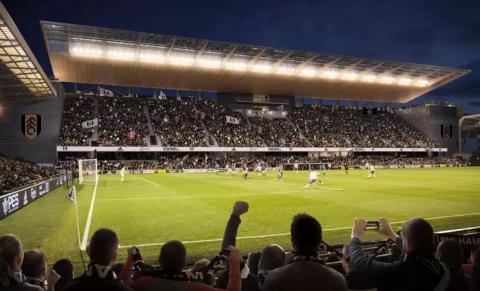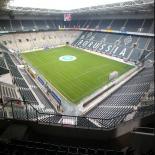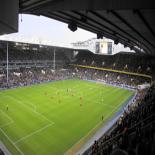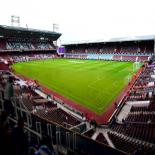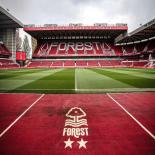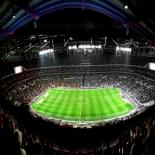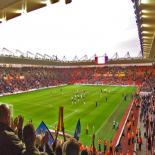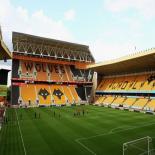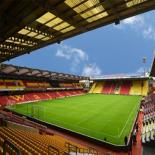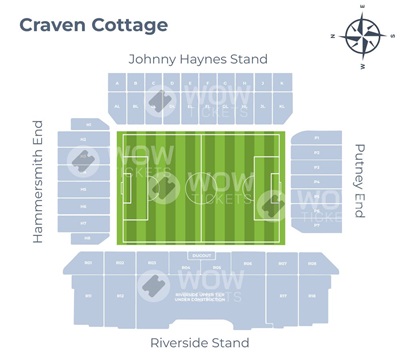
Craven Cottage Seating Plan
There are four stands on Craven Cottage stadium:
- On the long side – John Haynes and Riverside stands.
- On the short side (behind the goal) – Hammersmith end and Putney End.
The Rich History of Craven Cottage
Craven Cottage, the iconic home of Fulham Football Club, boasts a storied history that spans over a century. Nestled on the banks of the River Thames in Fulham, London, this historic stadium is not just a place to watch football but a living testament to the evolution of the sport and the club.
Early Beginnings
Construction and Opening (1896): Craven Cottage was originally a royal hunting lodge, but it was transformed into a football ground in 1896. The inaugural match was played on October 10, 1896, with Fulham taking on Minerva, marking the beginning of an era.
Architectural Significance
- Archibald Leitch Design: The stadium's design is attributed to Archibald Leitch, a renowned Scottish architect who specialized in football grounds. His signature style is evident in the iconic Johnny Haynes Stand, a Grade II listed structure that stands as a symbol of early 20th-century football architecture.
- The Cottage Pavilion: One of the most distinctive features of Craven Cottage is the pavilion, known simply as "The Cottage." This unique structure, located in the corner of the ground, has been an integral part of the stadium's charm since its inception.
Memorable Moments
- Post-War Revival: After World War II, Craven Cottage underwent significant renovations to repair wartime damages. The 1950s and 60s saw Fulham's rise, with legendary players like Johnny Haynes gracing the pitch.
- Hosting International Matches: Over the years, Craven Cottage has hosted several international matches, including games for the England national team and various international friendlies, adding to its prestige.
Modern Developments
- 21st Century Upgrades: The turn of the century brought further improvements to Craven Cottage. The Riverside Stand was redeveloped to enhance capacity and provide modern facilities while maintaining the ground's historic charm.
- Fulham's Premier League Era: Fulham's promotion to the Premier League in the early 2000s brought Craven Cottage into the spotlight. The stadium has since witnessed numerous memorable Premier League matches, with fans enjoying top-flight football in an intimate and historic setting.
Cultural Impact
- Film and Media: Craven Cottage's picturesque location and historic significance have made it a popular choice for film and television productions. It has featured in various movies, TV shows, and documentaries, further embedding it in popular culture.
- Community and Heritage: Beyond football, Craven Cottage plays a vital role in the local community. It serves as a hub for various events and activities, fostering a strong sense of community and heritage among Fulham fans and London residents alike.
Preserving the Legacy
- Commitment to Tradition: Fulham FC and its supporters are deeply committed to preserving the legacy of Craven Cottage. Efforts to maintain and restore the stadium's historic features ensure that future generations can continue to experience its unique charm.
- Future Plans: While plans for future developments are in place, the essence of Craven Cottage as a traditional, intimate, and historic football ground will always be at the forefront, maintaining its status as one of the most beloved stadiums in English football.
Craven Cottage is more than just a football stadium; it is a historic landmark that has witnessed over a century of sporting excellence, architectural innovation, and community spirit. Whether you're a die-hard Fulham fan or a football enthusiast, visiting Craven Cottage is a journey through time, celebrating the rich heritage of the beautiful game.




